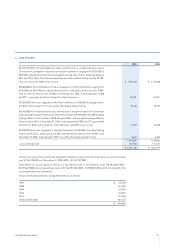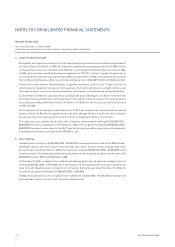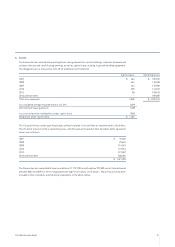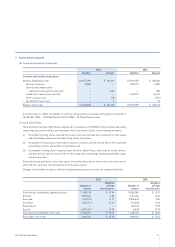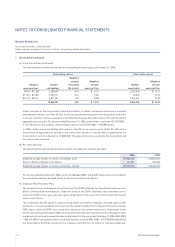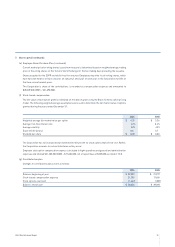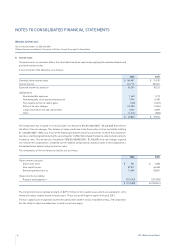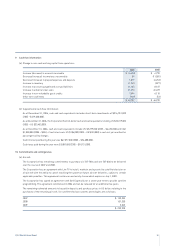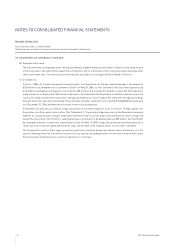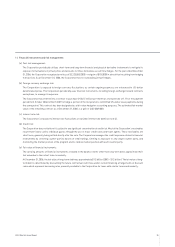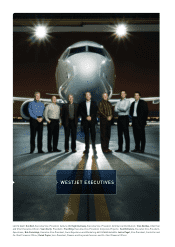Westjet 2006 Annual Report Download - page 57
Download and view the complete annual report
Please find page 57 of the 2006 Westjet annual report below. You can navigate through the pages in the report by either clicking on the pages listed below, or by using the keyword search tool below to find specific information within the annual report.
552006 | WestJet Annual Report
11. Financial instruments and risk management:
(a) Fuel risk management:
The Corporation periodically utilizes short-term and long-term fi nancial and physical derivative instruments to mitigate its
exposure to fl uctuations in jet fuel prices and accounts for these derivatives as cash fl ow hedges. For the year ended December
31, 2006, the Corporation recognized a net loss of $2,223,000 (2005 – net gain of $155,000) in aircraft fuel resulting from hedging
transactions. As at December 31, 2006, the Corporation has no outstanding jet fuel hedges.
(b) Foreign currency exchange risk:
The Corporation is exposed to foreign currency fl uctuations as certain ongoing expenses are referenced to US-dollar
denominated prices. The Corporation periodically uses fi nancial instruments, including foreign exchange forward contracts
and options, to manage its exposure.
The Corporation has entered into a contract to purchase US $2.5 million per month at a forward rate of 1.11 for the payment
period from October 2006 to March 2007 to hedge a portion of the Corporation’s committed US-dollar lease payments during
the same period. This contract has been designated as a fair value hedge for accounting purposes. The estimated fair market
value of the remaining contract as at December 31, 2006, is a gain of CAD $369,000.
(c) Interest rate risk:
The Corporation is exposed to interest rate fl uctuations on variable interest rate debt (see note 4).
(d) Credit risk:
The Corporation does not believe it is subject to any signifi cant concentration of credit risk. Most of the Corporation’s receivables
result from tickets sold to individual guests through the use of major credit cards and travel agents. These receivables are
short term, generally being settled shortly after the sale. The Corporation manages the credit exposure related to fi nancial
instruments by selecting counter parties based on credit ratings, limiting its exposure to any single counter party, and
monitoring the market position of the program and its relative market position with each counter party.
(e) Fair value of fi nancial instruments:
The carrying amounts of fi nancial instruments included in the balance sheet, other than long-term debt, approximate their
fair value due to their short term to maturity.
At December 31, 2006, the fair value of long-term debt was approximately $1.5 billion (2005 – $1.2 billion). The fair value of long-
term debt is determined by discounting the future contractual cash fl ows under current fi nancing arrangements at discount
rates which represent borrowing rates presently available to the Corporation for loans with similar terms and maturity.


